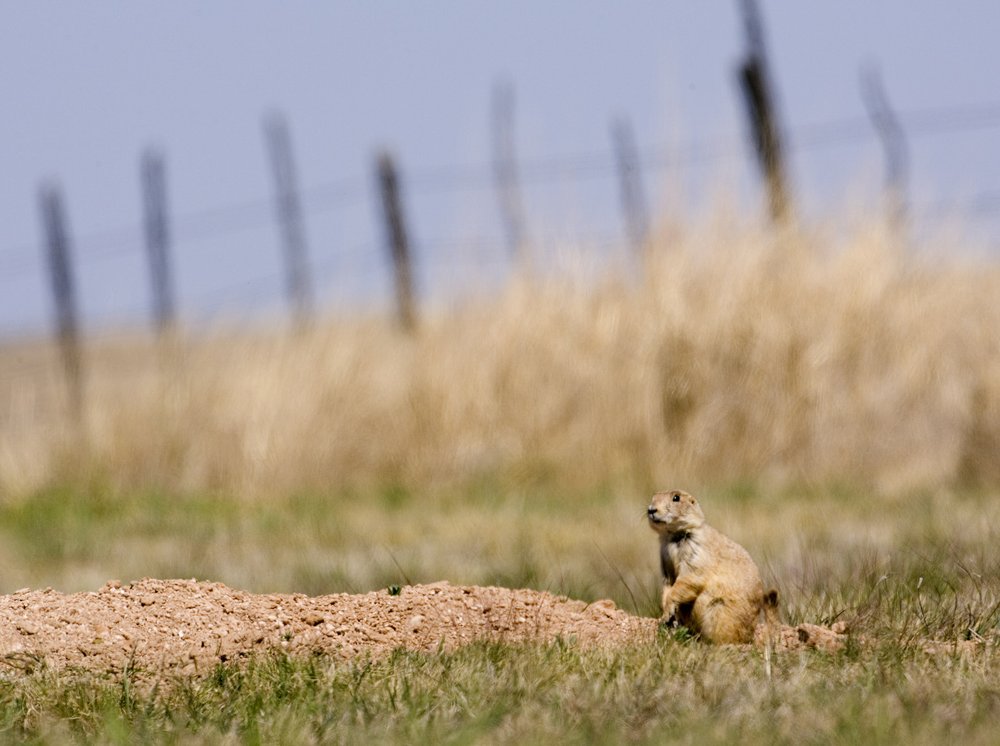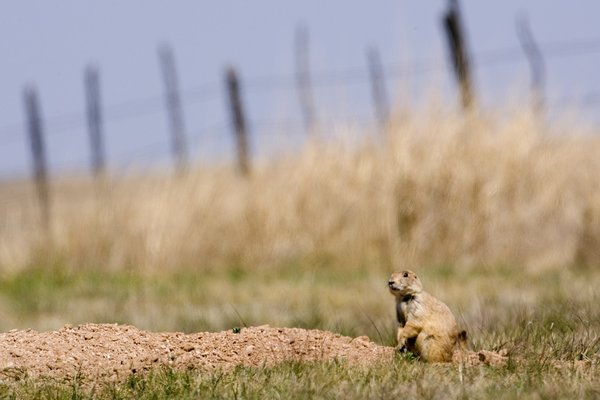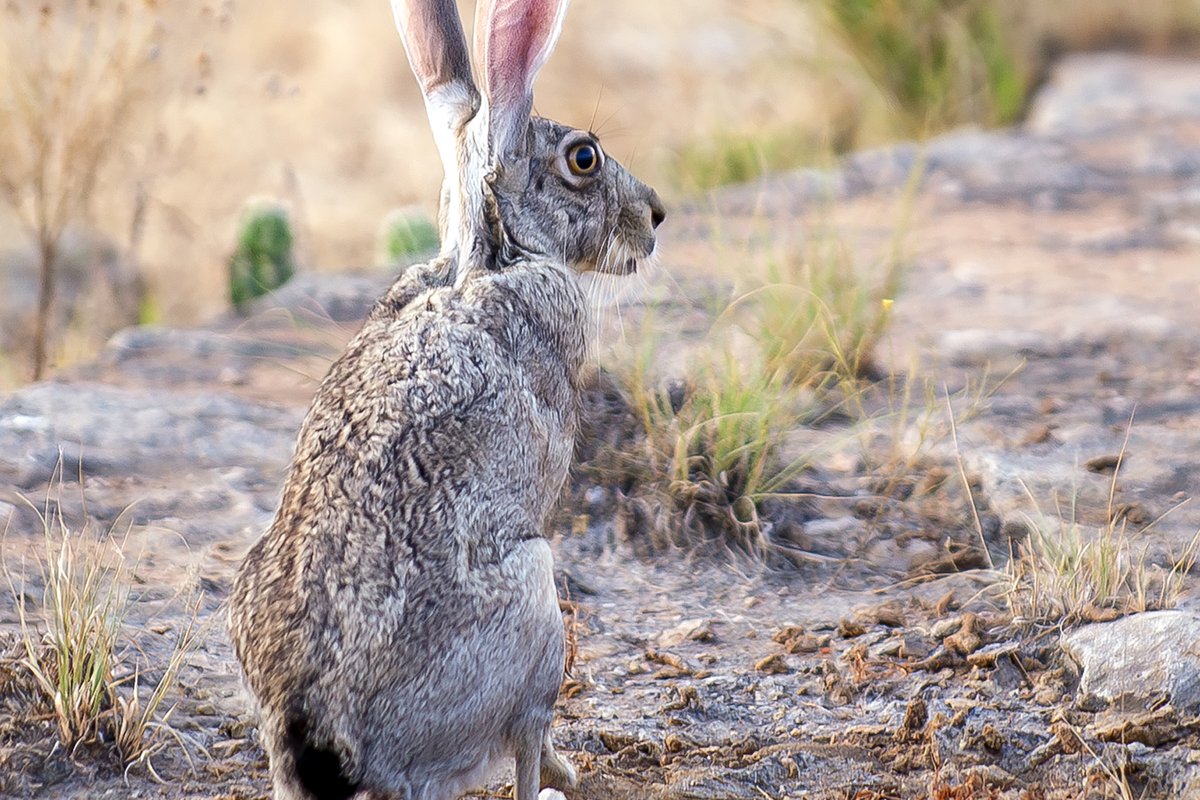If you remember nothing else about high school world history class, you probably remember the bubonic plague, the deadly bacterial epidemic that killed off a third of Europe's population in the 1300s.
What you might not know is that now, nearly 700 years later, the plague is still around. In the late 1890s, rat-infested steamships introduced the pathogen to the western U.S., and the disease still persists among humans and animals in the country today.
Between 1970 and 2022, about nine cases of human plague were reported in Texas. These days, plague is not an existential threat to humans; because it is caused by a type of bacteria, antibiotics are very effective against the disease.
It's a different situation for wild animals, however. In the western U.S., prairie dog colonies are extremely susceptible to the plague. If just one prairie dog in a colony contracts Yersinia pestis, 95 to 100 percent of the colony will likely die. “We have our image of this happy prairie dog colony — everybody's barking at each other, they're yelling, they're running around,” says Loren Cassin Sackett, an evolutionary biologist and assistant professor at the University of Louisiana at Lafayette. “If plague comes in, in a month, the colony could be gone.”
Sometimes, though, there are a few survivors. Cassin Sackett, who studies disease resistance in wild animals, is curious about what allows those few prairie dogs to live through the outbreak. Through studying dog towns in Lubbock, at Gene Howe Wildlife Management Area and across the western U.S., Cassin Sackett has identified genes that may confer resistance to the plague. Now the question is, why has that resistance not become widespread?
Studying Survivors
When Cassin Sackett was in graduate school at the University of Colorado Boulder, there was a huge outbreak of plague among the local prairie dogs (outbreaks like this are called epizootics, the animal equivalent of epidemics).
“In three different colonies, we saw there were survivors,” she says. “A lot of people thought, probably these are just prairie dogs that never got the plague for some reason — maybe they were hiding or something.”
But when Cassin Sackett tested the survivors for plague antibodies, she found that a small percentage had the antibodies in their blood, meaning they had contracted the plague and survived. Could there be something special about these specific prairie dogs allowing them to live through the disease?
One of Cassin Sackett's colleagues, Tonie Rocke, a research epidemiologist for the United States Geological Survey, found that the longer a particular prairie dog colony had been exposed to plague, the higher the rates of survival when the plague broke out again.
These two pieces of evidence pointed to there being something genetic underlying how some prairie dogs lived through plague epizootics. “What we're doing right now is trying to get an idea of the genetic basis of this ability to survive plague,” says Cassin Sackett.
The genes behind plague resistance by studying the surviving prairie dogs' genomes, the researchers identified some alleles (variations of certain genes) that were more common in survivors than they were in the broader population. This frequency suggested that the genes might help the creatures live through infection.
Cassin Sackett points to a study in which researchers in London excavated graves of people who died before, during and after the Black Death in Europe, and looked at their genomes to determine if any alleles changed in frequency before and after the plague. Basically, if a certain allele offered some resistance to the disease, you'd expect to see more of that after the epidemic, since more people with that gene would have survived.
One of the genes they found in post-plague Londoners was the same one Cassin Sackett found in plague-resistant prairie dogs. The gene in question is a T-cell stimulator gene, which plays a role in activating the immune system against threats.
The Big Mystery
The team is still working to understand why, if certain genes confer resistance to plague, those genes are not more widespread through the population. A plague event that kills 95 percent of prairie dogs is a pretty big bottleneck event — researchers might expect these kind of disease outbreaks to allow only resistant prairie dogs to go on, until the entire U.S. population of prairie dogs is resistant to plague.
But that's not exactly what seems to be happening. Prairie dogs are gradually becoming more resistant, as Rocke found. But something else is at play that's preventing these alleles from becoming ubiquitous across prairie dog populations.
Possibly this can be attributed to the fact that prairie dogs move around a lot and interbreed with other colonies, diluting the resistant genes in the population. Or else maybe those surviving prairie dogs, without the support of their colonies, end up dying before they can mate and pass on their resistant genes.
Another possibility is that the alleles that provide plague resistance may come with negative consequences to prairie dogs, the way sickle cell disease in humans provides resistance to malaria but comes with its own harmful effects.
Perhaps one day most of the U.S. prairie dogs will be more prepared for a plague outbreak, but for now, some researchers are focused on protecting them in other ways.
Saving a Keystone Species
Prairie dogs are a keystone species, meaning they support a whole ecosystem of their own. Burrowing owls make their homes in prairie dog burrows. Mountain plovers benefit from prairie dog towns' short-cropped vegetation and thorough alarm system. Endangered black-footed ferrets depend on prairie dogs for food (a single black-footed ferret can eat up to 100 prairie dogs in a year). When plague wipes out a prairie dog colony, it's not just the prairie dogs that suffer.
Because of the ecological importance of prairie dogs, scientists have been working for years to find a way to protect them from diseases, especially those as devastating as the plague. Currently, many groups manage plague in prairie dogs by manually applying insecticides to burrows to kill the fleas that transmit the bacteria. This has proved effective, but it is labor-intensive, and fleas may develop resistance to the most commonly used pesticide.
The USGS has developed edible, peanut butter-flavored vaccines that give prairie dogs a better chance at surviving plague outbreaks. A large-scale study showed the vaccine to be effective, but more work will be needed to scale up the method.
Cassin Sackett's work could, in the future, lead to another intervention technique. “If we find out, for instance, that Lubbock has a really high frequency of resistant prairie dogs or resistance alleles, and there's a wave of plague coming in somewhere else where there's very little genetic variation for resistance, we could move prairie dogs from Lubbock,” she says.
This kind of selective breeding could be good for not only prairie dogs, but also ferrets, owls and the rest of the prairie dog ecosystem. “If we can have prairie dogs that don't ever get plague, that's ideal,” she says. “That's one of the most direct, bigger picture things I can see coming from this work.”






